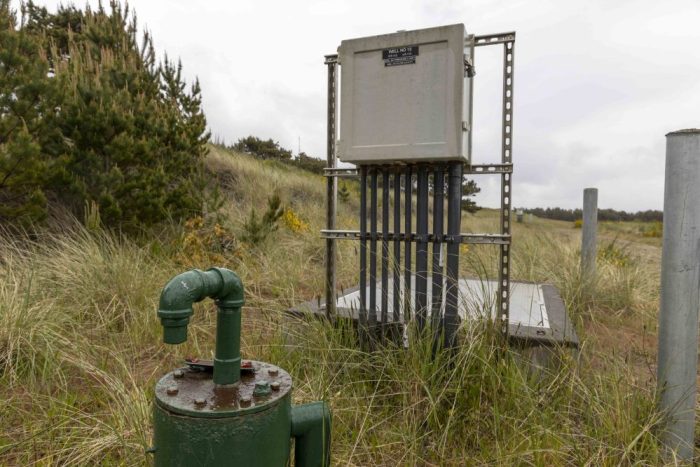‘It was like being sentenced by the devil’
Published 5:00 pm Wednesday, September 14, 2005
Second in a series
“I hated doing drugs, and I wanted to stop so bad, but I felt I was on autopilot.”
Tania Carter-Amell spent more than half her life addicted to methamphetamine and other drugs, enduring jail, homelessness and the loss of her children as a “hope-to-die dope fiend.”
Today the 48-year-old mom is celebrating three years clean and sober, and finding new purpose in life helping other recovering drug users escape their addictions.
Her inspiring struggle is part of The Daily Astorian’s three-part series on meth and its effects on the community which began Wednesday. Today reporters focus on the law and justice system’s response to a problem some say is almost overwhelming.
Carter-Amell lives with regret at the permanent damage the drug did to her mind and body, and the havoc it wrought on her family.
“I started losing my teeth, and being arrested, and committing crimes. I lost my children, but for some reason that didn’t stop me,” she said.
Carter-Amell tried and failed drug treatment on three different occasions before she landed in the local criminal justice system and under supervision of the Clatsop County Community Corrections Department, whose staff were able to get her into a treatment program that worked. She entered and completed the Drug Court program, won back custody of her young son, who had been taken away by state authorities because of her drug use, and landed a job with the department mentoring other addicts.
The grant that funded her position ran out earlier this month, but Carter-Amell plans to return to the department when the new Community Corrections Transition Center opens sometime next year. In the meantime she and her family have a new home in Washington, and she plans to attend college – along with her daughter – to get her counselor’s certification.
After the rush, the high”It was like being sentenced by the devil.”
Carter-Amell had already been doing drugs for half her life when at age 18 she tried meth for the first time. She loved the heady rush the drug produced, an intense light-headedness – “your whole body uplifts” – she compared to an orgasm.
After the rush came an hours-long high. In the beginning Carter-Amell loved the extra energy and motivation the drug gave her during that high. Over time, though, she found she needed the boost just to get going.
“I needed to get high to clean the house – if I wasn’t high, I had no motivation, I just laid around depressed and bored,” she said. “I told myself ‘I need to get some dope to get the house cleaned.'”
Paranoia is another common result of meth use, and Carter-Amell eventually became agoraphobic – afraid to leave the house – and relied on her husband to do the shopping and other household duties.
Earlier she shoplifted items and returned them to get cash for drugs, and was arrested for robbing three stores. In California she associated with some of the “high-rollers” of the drug trade, powerful but dangerous people including a member of a Mexican organized crime gang.
“I have been to some ugly parts of the world,” she said.
Hoping to break away from the drug culture, Carter-Amell moved to the North Coast eight years ago. But she quickly found that Astoria was “meth central” – she could get her hands on the drug at any time, and if she was broke, someone would usually give her some for free.
“It took me less than a week to get back into it,” she said.
Carter-Amell “went strong” on the drug for five years, continuing a downward spiral that eventually left her pregnant, homeless and behind bars. When her baby was 18 months old she lost him to state authorities.
But through the local criminal justice system she found a group of people who together guided her along the long path to recovery, beginning with her local drug counselor, who Carter-Amell saw for the first time while still high.
“She didn’t judge me, she just listened,” she said.
But her counselor also made it clear she expected Carter-Amell to do more than just go through the motions, after Carter-Amell told her she would only do what was necessary to get through the program but would start using meth again once she was done.
“She said ‘then why should I help you? If you think I’m going to help you get your children back you’re sadly mistaken,'” she said.
Passing along creditCarter-Amell also credited drug counselor Paul Burbridge, who works on contract in the Community Corrections Department and who found her a space in the Baker City facility.
Her parole officer, Becky Paxton, kept working with Carter-Amell, despite the many times she continued using drugs while under supervision, she said, and she commended Judge Paula Brownhill, who oversaw the Drug Court program when Carter-Amell was a participant. “I love that lady,” she said.
She also pointed to her husband of four years, who handled all the household chores when she was too strung out to tackle them, and who stood by her during her lengthy recovery. “I wouldn’t have made it without him.”
The drug’s legacy is immediately visible when Carter-Amell smiles, revealing several missing teeth. Less noticeable are the lingering physiological effects, including her dampened sense of pleasure. Research points to meth’s long-term damage to the terminals in the brain that release dopamine, the naturally occurring chemical associated with feelings of happiness.
Anti-depressants control the worst of her emotional downturns and keep at bay any cravings for meth, but she’s conscious of the change in her personality.
“It takes a lot for me to laugh, I don’t find a lot of joy in things,” she said. “I find myself really bored.”
She also suffers from memory lapses, forgetting conversations she’s had just minutes earlier, she said.
“I was disappointed – I thought once I stopped it would all be repaired,” she said.
Wasted potential”The meth world is hell. It hurts children really bad – I know I hurt mine.”
Along with the disappointment over her own wasted potential, Carter-Amell also regrets the harm done to her children because of her drug use.
“When I was high I couldn’t communicate with my kids, I was in a bubble,” she said. “I neglected them.”
In California state authorities took her four children away. Carter-Amell eventually got clean long enough to regain custody of the two oldest kids, but the others were adopted out to other families. Even after they were returned, the older kids found it hard to make friends or other connections, because they feared they could be taken away from their home at any time, she said.
In Astoria Carter-Amell was also faced with losing her newest child, who the state threatened to take away when he was 18 months old, Carter-Amell said. Her successful recovery prevented her from losing him, and the boy, now four, is “thriving” with the attention she’s able to give him now that she’s free from the grip of meth.
One of the key incentives keeping her on the recovery path is the chance to meet the two younger children, now in their teens, when they turn 18, Carter-Amell said.
Now she helps others”I ended up being everyone’s mother.”
Carter-Amell has found another reason to celebrate her sobriety – becoming a mentor to other recovering drug users. Working through the Community Corrections Department, she helped people convicted of drug-related offenses navigate the probation and treatment programs, and provided a sympathetic ear to people struggling with the same problems she had to face.
“It’s so much easier to do something when someone is holding your hand,” she said.
She took clients to court appearances or treatment sessions, helped them sign up for public assistance, jobs and housing, or just went on walks or to the movies. She met with clients’ relatives to help repair family ties.
She also started a women’s recovery discussion group at the Women’s Resource Center.
“This is something I love – working with people and giving them hope,” she said. “Nothing is stronger than hope – where there’s hope, there’s possibilities.”





